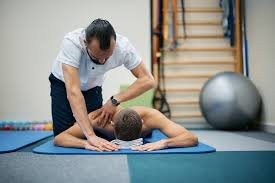In the world of sports, athletes continually seek ways to enhance performance and expedite recovery. While rigorous training and optimal nutrition play critical roles, one often underestimated aspect is the use of massage therapy. Massage therapy has emerged as a vital component in the toolkit of many athletes, offering 꾹꾹 numerous benefits that extend beyond mere relaxation. This article delves into the various ways massage can enhance athletic performance and recovery.
Contents
The Science Behind Massage Therapy
Massage therapy involves the manipulation of soft tissues, including muscles, tendons, and ligaments, to improve overall well-being. The techniques used can range from deep tissue massage, which focuses on deeper layers of muscles, to sports massage, which is specifically tailored to athletes. The benefits of massage therapy are supported by scientific research, demonstrating its effectiveness in various domains.
Enhancing Performance
Improved Flexibility and Range of Motion
One of the primary benefits of massage therapy for athletes is improved flexibility and range of motion. Tight muscles can restrict movement, leading to suboptimal performance and a higher risk of injury. Regular massage helps to loosen tight muscles and improve joint flexibility. By enhancing the range of motion, athletes can perform more effectively, with movements that are both more powerful and fluid.
Increased Circulation
Massage therapy stimulates blood flow, which is crucial for athletic performance. Enhanced circulation ensures that muscles receive adequate oxygen and nutrients, essential for optimal function. Additionally, improved blood flow helps in the removal of metabolic waste products, such as lactic acid, that can accumulate during intense physical activity. This not only boosts performance but also reduces muscle fatigue.
Mental Relaxation and Focus
The psychological benefits of massage cannot be overlooked. Athletes often face immense pressure, which can lead to mental stress and anxiety. Massage therapy promotes relaxation by triggering the release of endorphins, the body’s natural feel-good hormones. This relaxation effect can improve focus and concentration, essential components of peak performance.
Prevention of Injuries
Regular massage can play a significant role in injury prevention. By addressing muscle imbalances and tightness, massage helps to correct posture and alignment issues that could lead to injuries. Furthermore, it aids in the early detection of potential problems, allowing athletes to address them before they become serious.
Accelerating Recovery
Reduced Muscle Soreness
Delayed Onset Muscle Soreness (DOMS) is a common issue athletes face after intense workouts. Massage therapy has been shown to significantly reduce the severity and duration of DOMS. Techniques such as deep tissue massage and myofascial release help to alleviate muscle soreness by breaking down adhesions and promoting muscle relaxation.
Faster Healing of Injuries
Injuries are an inevitable part of an athlete’s life. Massage therapy can accelerate the healing process by increasing circulation to the injured area, reducing inflammation, and promoting tissue regeneration. Techniques like lymphatic drainage massage help to remove excess fluids and waste products, further facilitating recovery.
Enhanced Sleep Quality
Sleep is a critical component of recovery for athletes. Massage therapy has been found to improve sleep quality by promoting relaxation and reducing stress levels. Better sleep allows the body to repair and regenerate tissues more effectively, leading to quicker recovery times and better overall performance.
Pain Management
Chronic pain can significantly hinder an athlete’s ability to train and compete. Massage therapy offers a non-invasive, drug-free approach to pain management. By targeting specific pain points and using techniques like trigger point therapy, massage can alleviate chronic pain and improve an athlete’s quality of life.
Types of Massage for Athletes
Sports Massage
Sports massage is specifically designed for athletes and focuses on areas of the body that are overused and stressed from repetitive and often aggressive movements. It involves a combination of techniques such as deep tissue massage, trigger point therapy, and stretching. Sports massage can be used pre-event, post-event, or during training to enhance performance and recovery.
Deep Tissue Massage
Deep tissue massage targets the deeper layers of muscles and connective tissues. It is particularly beneficial for addressing chronic muscle tension and injuries. This type of massage involves slow, deliberate strokes and deep finger pressure, making it ideal for athletes with long-standing issues that require intensive treatment.
Myofascial Release
Myofascial release focuses on relieving tension in the fascia, the connective tissue surrounding muscles. This technique involves applying gentle, sustained pressure to the fascia to release restrictions and improve movement. Myofascial release is especially beneficial for athletes experiencing tightness and discomfort due to overuse.
Swedish Massage
Swedish massage is a more general form of massage that involves long, flowing strokes, kneading, and circular movements. It is ideal for relaxation and stress relief. While not as intensive as sports or deep tissue massage, Swedish massage can still offer significant benefits for overall muscle relaxation and mental well-being.
Integrating Massage into an Athlete’s Routine
To maximize the benefits of massage therapy, athletes need to integrate it into their routine. This can be achieved by:
Scheduling Regular Sessions:
Consistency is key. Regular massage sessions, whether weekly or bi-weekly, can help maintain muscle health and prevent injuries.
Tailoring Techniques to Individual Needs:
Every athlete is different, and their massage therapy should reflect that. Working with a skilled therapist to identify specific needs and tailor techniques accordingly can enhance the effectiveness of the treatment.
Combining with Other Recovery Strategies:
Massage therapy should be part of a comprehensive recovery strategy that includes proper nutrition, hydration, and rest. Combining these elements will yield the best results in terms of performance and recovery.
Conclusion
Massage therapy offers a plethora of benefits for athletes, from enhancing performance to accelerating recovery. By improving flexibility, increasing circulation, promoting mental relaxation, and preventing injuries, massage helps athletes reach their full potential. Furthermore, it plays a crucial role in reducing muscle soreness, speeding up injury healing, enhancing sleep quality, and managing pain. Integrating regular massage sessions into an athlete’s routine can make a significant difference in their overall performance and well-being. As the science continues to support the benefits of massage, it is clear that this therapy is not just a luxury, but a necessity for athletes striving for excellence.





